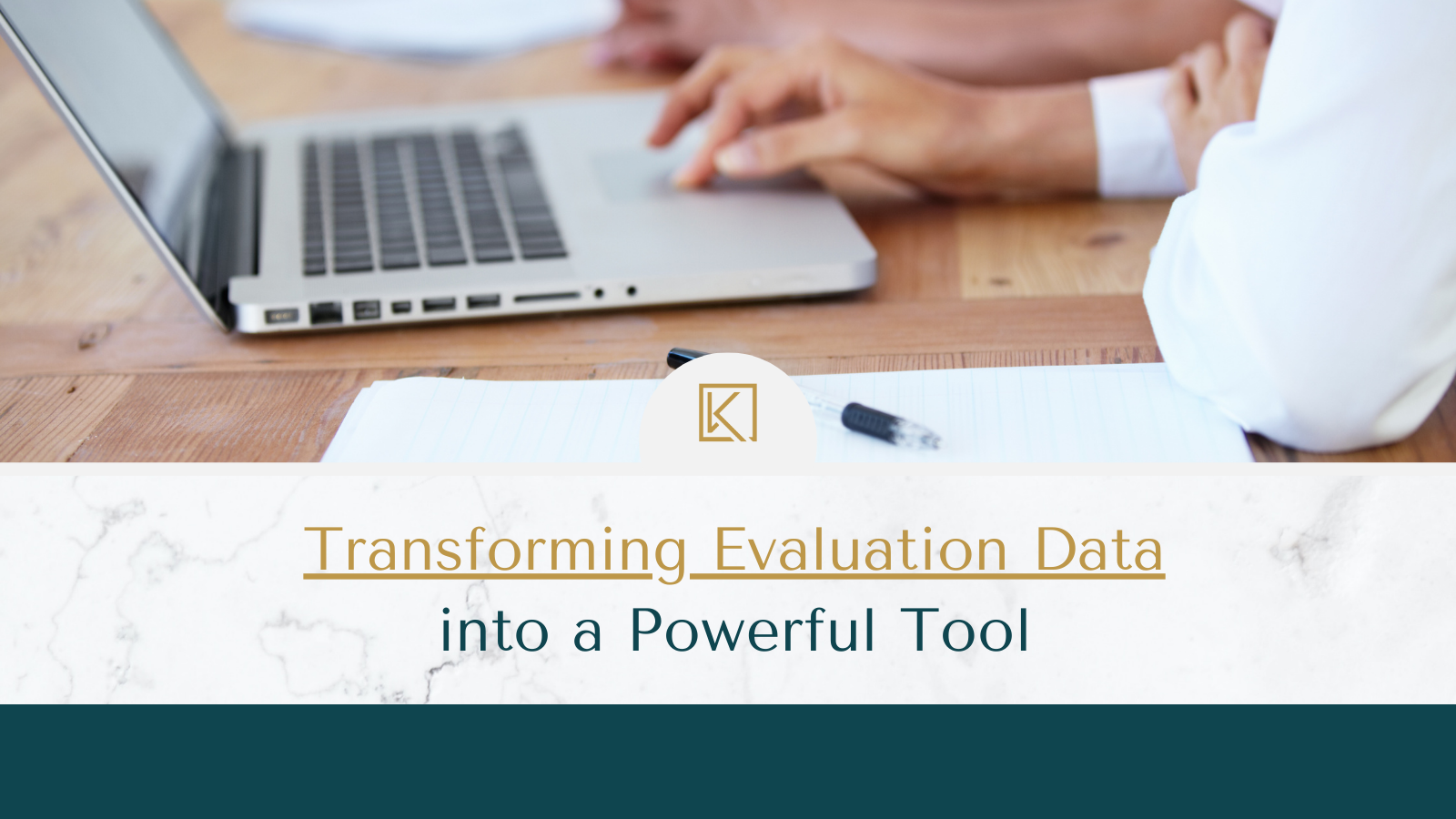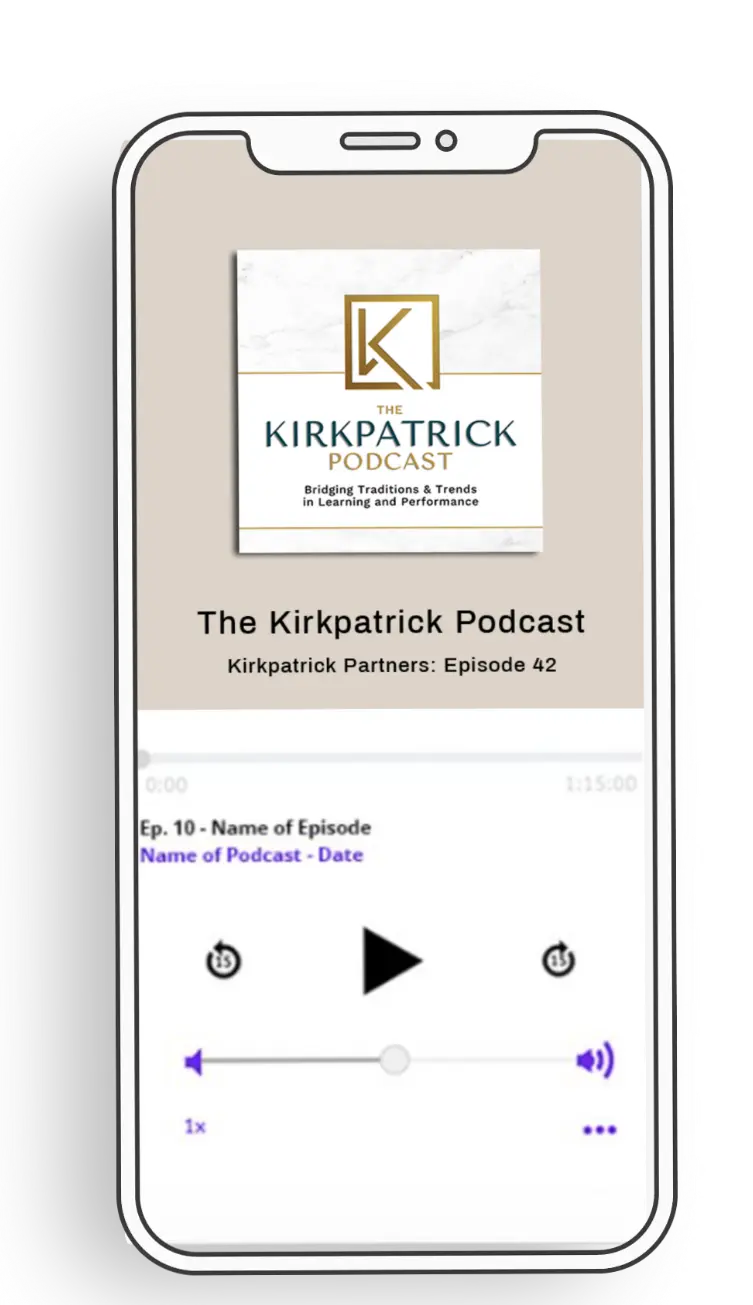Transforming Evaluation Data into a Powerful Tool

Have you been wondering how to leverage your evaluation data into a powerful tool for influence? Evaluation data is only as good as how you present it, and to whom. If you want to enhance and elevate your training programs to achieve long-term goals, it starts with determining and communicating the effectiveness of your training programs to ensure that they remain relevant, meet the evolving needs of your team, and stay aligned with organizational goals.
True value in L&D comes from recognizing that training is just one piece of a broader puzzle. Other factors like organizational culture, support from senior stakeholders, and post-training reinforcement play pivotal roles in achieving desired outcomes. Effective evaluation practices make those other factors a central part of your overall training strategy.
Here’s how to refine your approach for maximum impact.
Tell the Story of Data Impact
Data alone can be overwhelming and dry. To make your evaluation results meaningful, craft a compelling narrative that resonates with different stakeholders. Consider their perspectives and concerns, and present data in a way that highlights its relevance to their specific needs and interests. A well-told story can turn raw data into actionable insights, making it easier for stakeholders to understand the impact of your programs and support future initiatives. Beyond knowing your audience, there are a few additional storytelling elements that will help you amplify your impact.
Here are some insider tips for crafting a compelling data story:
1. Start with a Hook: Just like you’re taught to do in a training, begin your story with a compelling hook that grabs attention. This could be an intriguing statistic, a poignant quote, or a surprising finding. The goal is to engage your audience from the outset and make them want to learn more.
2. Use Clear and Concise Visuals: Visuals like charts, graphs, and infographics can make complex data more digestible. Ensure that your visuals are clear, relevant, and easy to interpret. Avoid cluttered graphics and focus on highlighting the key points.
3. Create a Narrative Arc: Structure your data story with a clear beginning, middle, and end. Start by presenting the context and objectives of your program, move on to the key findings and insights, and conclude with recommendations and next steps. A well-organized narrative helps maintain interest and ensures that your audience follows your logic.
4. Highlight Key Insights: Focus on the most significant findings and insights from your data. Avoid overwhelming your audience with too many details. Instead, emphasize the data points that align with your stakeholders’ interests and the overall goals of your program.
5. Incorporate Real-Life Examples: Use case studies, testimonials, or real-life examples to illustrate how the data translates into tangible outcomes. Personal stories or specific instances can make your data more relatable and impactful.
6. Address Concerns and Questions: Anticipate potential concerns or questions your stakeholders might have and address them within your narrative. Providing answers to these questions proactively demonstrates thorough analysis and builds trust in your findings.
7. Focus on Actionable Insights: Ensure that your data story not only presents findings but also provides actionable recommendations. Clearly outline what steps should be taken based on the data, and how these actions can improve future programs or strategies.
8. Keep It Engaging: Avoid jargon and overly technical language that might alienate non-specialist audiences. Use straightforward language and engaging storytelling techniques to make your data accessible and interesting.
Powerful Data is Relevant Data
Harnessing the power of data goes beyond just collecting numbers; it’s about ensuring that data remains relevant and actionable. Here are 3 practices that can help transform your data from meaningless measurements and surveys into a powerful tool for continuous improvement and lasting success.
1. Audit Your Programs
Even if your program appears to be successful, regular audits are crucial. An audit involves a thorough review of your training programs to identify strengths and areas for improvement. This process helps ensure that your programs remain relevant, effective, and aligned with your organization’s goals. By consistently evaluating and refining your programs, you can maintain high standards and adapt to changing needs and trends.
2. Be Transparent
Participant feedback is invaluable for enhancing your programs, but it’s important to show that their input is being acted upon. Provide updates on how feedback is used to improve the training experience. This transparency helps prevent survey fatigue, as participants see the tangible impact of their contributions. When learners feel their voices are heard and valued, engagement and satisfaction levels typically increase.
3. Move Beyond Measurement
Measurement is just the beginning of effective evaluation. While it’s important to assess the outcomes of your training programs, incorporating ongoing support and follow-up is crucial to leverage your investment fully. Post-training support can include additional resources, coaching, or refresher courses that help reinforce learning and ensure long-term success. By extending your support beyond initial measurements, you can maximize the impact and sustainability of your training programs.
Maintain the Fundamentals
Advancements in technology, such as AI, can greatly enhance data analysis and provide deeper insights. However, technology should complement, not replace, fundamental skills. Critical thinking and evaluation skills are essential for interpreting data accurately and making informed decisions. While AI and other tools can process vast amounts of information and identify patterns, they still rely on human judgment to contextualize and apply the insights effectively. By combining technological tools with your analytical expertise, you ensure that your L&D strategies are not only data-driven but also thoughtfully crafted and aligned with your organization’s objectives. This balance enables you to harness the full potential of your data while retaining the nuanced understanding that comes from human experience and expertise.
Amplify Your Impact
To create impactful and effective L&D programs, focus on building a solid foundation by telling meaningful stories with your data, regularly auditing your programs, and providing ongoing support. By maintaining a balance between technological advancements and core evaluation skills, you can continuously improve your training initiatives and drive significant value for your organization.
Interested in diving deeper? Check out the latest episode of the Kirkpatrick Podcast as Vanessa Alzate and Jim Kirkpatrick welcome renowned expert, author, consultant, and adjunct faculty member for NYU’s Learning Design certificate, Sophie Oberstein to discuss how to identify the specific needs of key stakeholders, address common misconceptions, and leverage meaningful evaluation data to leave a lasting impression. Her insightful case study alone, packed with actionable tips to enhance your communication skills and strengthen your credibility, is worth the listen!
LEARN WITH US
If you are on the search for a community that gets you and can provide you with that support you’ve been looking for, we would love to have you as a part of our Kirkpatrick Community! Learn more and join here.
Check out the most recent episode of the Kirkpatrick Podcast
Don’t forget, the true magic happens when we modernize our training methods and see concrete results. Cultivating an environment of trust, active participation, and continuous enhancement increases the likelihood of our training programs’ success.
Interested in mastering the Kirkpatrick Model? Dive into the Kirkpatrick Evaluation Toolkit, your comprehensive resource for streamlined and impactful evaluation. Learn more here!





